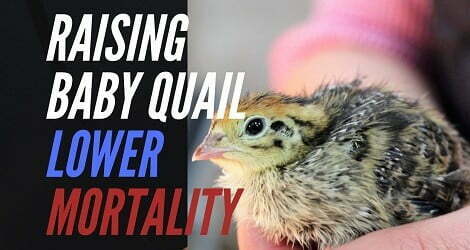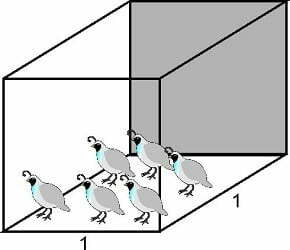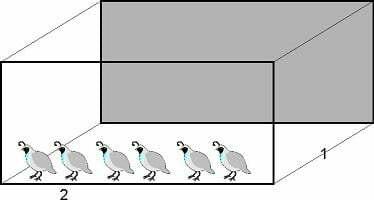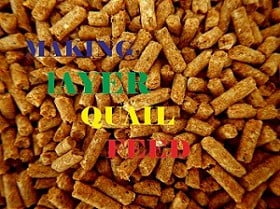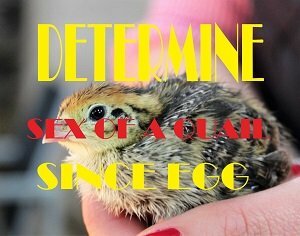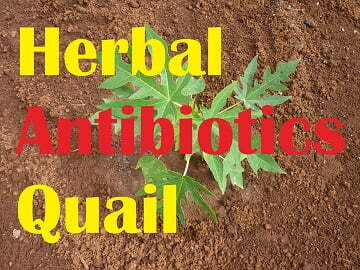Raising baby quail guide
Raising baby quail is the first step when you want to start a quail farm. Whether it’s for the purpose of meat or eggs.
This is an important step because it will determine the quality of the quail during the grower and layer phase.
Therefore, we will focus on this stage first. Even though the baby quail that we get is the result of our own hatching, its quality must meet what I will say.
Why is this important?
Because we can divide the growth phase of raising quail into three stages. The first is a starter. The second is the grower phase and the third is the layer or finisher.
The starter phase is 0 – 3 weeks. Grower, 3 – 6 weeks and finisher or layer above the age of 6 weeks
When the starter phase is not optimal, it will affect the next phase.
For example, when the minimum weight of a starter is not targeted, then the growth during the grower phase will be slower.
Remember, quail growth is strongly influenced by the amount of feed consumption. While the amount of feed consumption, linearly with quail weight.
This could cause the growth of quail to be longer and the time for the first time laying eggs becomes more delayed.
Of course it’s not good for business right?
Because the longer the raising time, the more costs will be incurred. Especially, for the cost of feed.
Baby quail for sale
If you don’t do the hatching by yourself, then you have to buy some baby quails. I used to call this baby quail with Day Old Quail (DOQ). What about you?
You can buy it online or look for quail hatcheries around you.
Maybe, some of the links below can help you to find the baby quail you want.
Honestly, I don’t know whether you can get this quail easily or not. If at our place, we can get DOQ easily. Not only in the number of hundreds, even thousands also possible.
If you do experience any difficulties, maybe this book can help to overcome the difficulties that you get.
Ok, now suppose you don’t experience any obstacles and it’s easy to get the baby quail.
There are three things that you have to confirm to quail suppliers. This is the initial requirement that we will get the best quality of baby quail.
- DOQ has a minimum weight of 8 grams/head at the age of 1 day. If this is too difficult, at least the weight of baby quail is between 6.5 – 8 grams/head.
- Physical condition is healthy, not deformed, active and agile, dry and clean rectum, uniform fur color, dry and swollen coat condition.
- Derived from sires with a minimum egg production ability of 250 eggs/head/year, the minimum egg weight is 10 grams/egg, fertility and hatchability are at least 70%.
After you are sure of the three things above, then we will proceed to the technical steps of maintenance for rasing baby quail.
How to take care of a baby quail?
This is a sensitive stage. Therefore, we must really pay attention to it.
We can start from the preparation of cages, selection of baby quail, regulate cage density and also temperature, provide feed and drink, and care.
Preparing the cage
Cages for baby quails can be square. It’s not the best, but so far it can work quite effectively.
About its size, it can be adjusted according to the amount of DOQ. Later, we will explain in more detail about the size of this cage.
The wall of the cage is made from solid material, for example a wooden board, plywood, etc. As for the bottom and front, you can use wire mesh.
Solid wall serves to maintain the heat. This is to keep the heat from getting out of the cage. While wire mesh, serves to ventilate.
Before the DOQ arrives, this cage must be sterilized first. We can wash it with a disinfectant. After that, it is dried with or without sunlight.
Whatever method that you use, the goal is to kill any bacteria that can cause disease.
After that, we provide heaters. Can use light bulbs or others.
Before quail children enter the cage, the temperature of the cage must be set. The temperature is set at 100.4 – 101.3 Fahrenheit.
For the base of the cage, it can be coated with paper or something else. The materials for this board should be able to absorb the liquid that comes out along with feces.
Selection of baby quail
The DOQ that we will put into the cage must be of high quality. While regarding the quality of this DOQ, we have discussed it in the points above.
What should we do with the rejected DOQ?
You can maintain it separately and provide treatment that is commensurate with its quality.
Cage density and temperature
The number of baby quail in a cage must be optimal. Too dense or too loose is not good.
The baby quail population in cages that are over crowded will cause the temperature around their bodies to be higher. This will speed up the metabolic rate and require a lot of energy.
Similarly, if it is too loose, it will make their space wider. Too much activity will require a lot of energy too.
The table below is a guide for determining the correct density of cages.
| Age (weeks) | Density (head/m2) |
| 0 – 1 | 100 |
| 1 – 3 | 80 |
Besides density, we also have to pay attention to the temperature of the cage. We must always check whether the heater we are using is effective or not in providing warmth to DOQ.
The way to see whether these heaters are effective or not is as follows:
- If most of baby quail gathers under the heater, the temperature at the edge of the cage is still too cold.
- Conversely, if there are more quails gathered on the wall of the cage, the temperature below the heater is too hot.
- Ideally, the activity of the baby quail should be evenly distributed in the cage area.
Feeding and drinking
When quail children enter the cage for the first time, do not to be fed immediately.
We must give them time to adapt to their new environment.
This is to reduce the stress levels due to travel or shipping. Therefore, we can do the following:
When DOQ enters the cage for the first time, leave them for a while. It may take around 1 hour.
After that, baby quails are then given a drink with additional vitamins and antibiotics in it.
Two hours later, DOQ can be fed.
Feed specifically for the quail starter phase. Feed in this phase has a higher nutrient content than the phase after.
The nutritional requirements for this starter phase quail are as follows.
| Nutritional Contents | Amounts (% Dry matter) |
| Moistures (max.) | 12% |
| Crude protein | 21 – 24 % |
| Fat (max.) | 7% |
| Crude Fiber (max.) | 6.5% |
| Calcium (min) | 0.9 – 1.2 |
| Phosphor (min) | 0,6 – 1 |
| Metabolic Energy Kcal/kg (min) | 2800 |
| Lysine (min) | 1.1% |
| Metionin (min) | 0.4 % |
| Vitamin A (IU/kg) | 13000 |
| Aflatoxin (max/Pb) | 40% |
The feed is given twice a day with amounts of 2-4 grams per head.
Feed and drink places must be cleaned every day.
Can baby quail eat chick starter?
Basically, all poultry is almost the same. So, feed problems should not be complicated.
As long as the nutritional content meets the standards for quail, it can be used.
The only difference is in the amount of the gift.
Caring
Once more again, this is a sensitive stage. We must focus so that the growth of the quail is optimal.
So, these are steps that we really need to do.
- The base cage cover (paper or carton) must be replaced every 2 days. This is because the base that’s too moist can make the humidity of the cage too high. In addition, ammonia from feces can interfere with health if the amount is excessive.
- On the first day, all vents are closed. This is to keep the temperature of the cage warm. In addition, it can withstand direct wind exposure to baby quail.
- On days 2 – 5, ventilation can be opened gradually. Day 6, ventilation can be opened completely during the day and closed again at night.
- Day 7, the base cage cover is no longer needed. Quails are directly above the wire mesh.
- Days 8-21, the size of the cage is added or moving some quail to another cage. See the cage density table above.
- If possible, try the baby quail to get morning sunshine. This is good for helping the growth and health of them.
Until this stage, we have finished for caring baby quail in the starter stage. Next is the stage for the grower and layer phases.
For this reason, we will meet again in the next article.
Thank you for passing by.
 JOYNIM FARM Goat Farming, Cattle Farm, Laying Hens, Quail Farm, Gardening
JOYNIM FARM Goat Farming, Cattle Farm, Laying Hens, Quail Farm, Gardening
